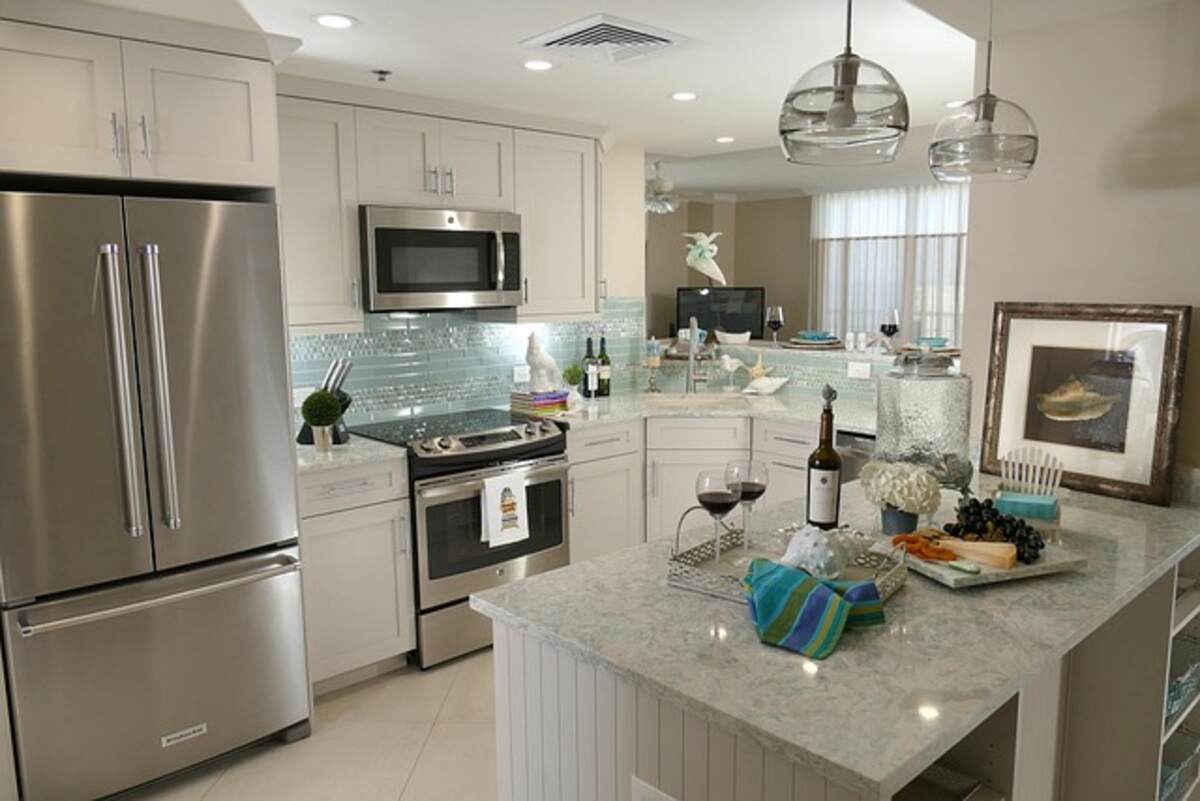These days, laminate countertops are the norm in the kitchen. The synthetic materials used to construct these countertops include numerous layers of Kraft paper, plastic coatings, and decorative paper. Laminate counters are popular because they are inexpensive and can be found in various colors and designs, making them a good choice for the kitchen.
Laminate countertops cost one-half as much as their solid surface counterparts of the same size. Laminate countertops vary in cost based on their complexity, the materials they’re made from, and the degree to which they can be personalized. Laminate is your best bet if you need a low-cost, short-term solution for your kitchen counters.
To make a laminate countertop, plastic is used to sandwich the countertop material between two layers before heating it to fuse the plastic layers. Some laminating machines include multiple rollers for producing multiple laminate sheets, which are used to build laminate countertops.
Countertops made of laminate material are impermeable. This is why it inhibits the multiplication of yeasts, bacteria, and molds. Because of this, you can use the countertop as a safe cooking surface.
Fabrication techniques for laminate countertops depend on the plastic and fusing substance utilized. Traditional laminate countertops used to be made of melamine plastic, but nowadays, they’re made of reinforced polymers with glass fibers and carbon. These days, low-end laminate countertops are made from a material made of melamine and formaldehyde.
Laminate countertops come in various colors, textures, and patterns. They often mimic the look of popular modern stones like granite, marble, quartz, and slate. Wood grain and stone-look laminate countertops are the most common styles.
Laminated countertops are most frequently found in the following colors: blue, black, gray, cream, beige, and white. In addition to traditional designs and vintage hues, today’s palette includes cutting-edge, forward-thinking shades. If you’re going for a throwback look in the kitchen, atomic orange and aqua boomerang are the way to go.
Laminate countertops are durable and won’t stain easily. Your laminate countertop can be easily cleaned with water and a mild disinfectant or home cleaner. After you’ve finished, use a dry cloth to wipe it clean. Ensure that neither of these rags is composed of anything abrasive, lest you scratch your laminate countertop while cleaning. Scratches in a laminate countertop spoil its appearance and allow water to seep in. As a result, mold, mildew, germs, and discoloration can flourish.
Since alkaline and acidic cleaners can eat away at the fiberglass laminate, they should be avoided when cleaning laminate countertops. Even more, powerful substances can dissolve the laminate. Therefore, you should select pH-7 neutral cleaning products.
Try using a solution like Countertop Magic or Plexus to keep your laminate counter looking new. Stains on your countertop can be removed with the help of Goof-Of or a paste made from baking soda and water, which should be applied with a soft bristles brush. You should only drive 10–20 strokes to eliminate wet stains. If used excessively, baking soda is mildly abrasive and can scratch the laminate countertop.
Keep your laminate counter surface free of lasting stains by avoiding spilling hair, textile, or food colors. Any of these messes should be cleaned up right away with dish soap or an all-purpose cleaner. If you spill oven cleaning or toilet bowl cleaner, clean it immediately and flush the area often.
Laminate countertops are easily scratched by steel wool and other abrasive materials. Nor should steel wool pads be kept there, as the rust they produce creates unsightly marks on the laminate surface.
Although laminate countertops are water and shock resistant, they can be scratched if used as a work table or cutting board. Don’t use the laminate countertop as a chopping board; use dedicated cutting surfaces. Do not put hot items on the laminate countertop, such as hot pans, hair dryers, sizzling plates, etc. To avoid damaging the surface of your countertops, set them on trivets or insulated heating pads.
Laminate countertops can be rinsed. However, prolonged exposure to water is not recommended. If water gets in via the joints, bacteria will start growing and causing problems. The backsplash also deteriorates because of the constant presence of moisture. A spray allows more precise water distribution control than a wet towel.
If your laminate kitchen counter gets scratched, it’s toast. The best that can be done is to utilize a seam fill kit purchased separately to lessen the damage to the countertop to the point where the seam is barely evident. However, the cracked or broken pieces of the laminate countertop will not be fixed by using these products.
Just putting up a laminate countertop in the kitchen won’t cut it. Edges should be used on the countertop for both practical reasons (to prevent damage) and aesthetics (to make the countertop look better). Laminate countertops can have decorative edges made from various materials, including the standard rolled and beveled edges and wood and solid surface inserts for a more detailed look. Advantages come in a variety of styles to complement your existing kitchen design.
Splashbacks in the kitchen are often made of laminate, which is also used for countertops. The wall behind the sink needs to be protected from water damage. Thus, a splashback is installed there. Splashbacks can be manufactured from various materials, including laminate, tiles, stainless steel, and glass.
Read also: Ways To Get Organized – 5 Simple Ways

